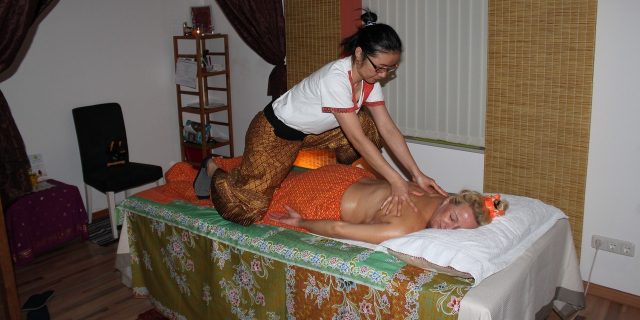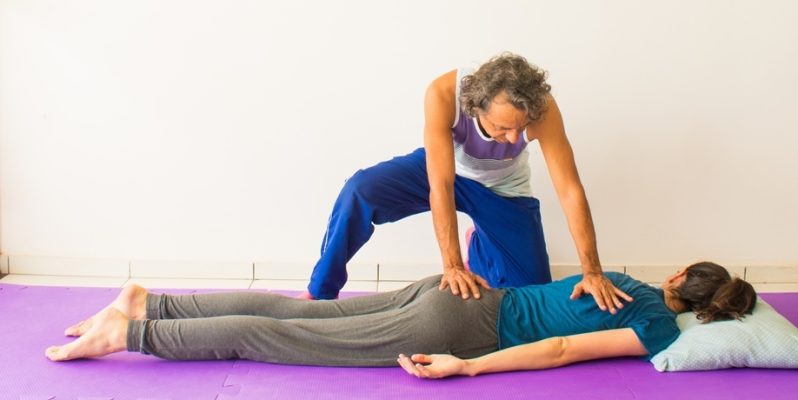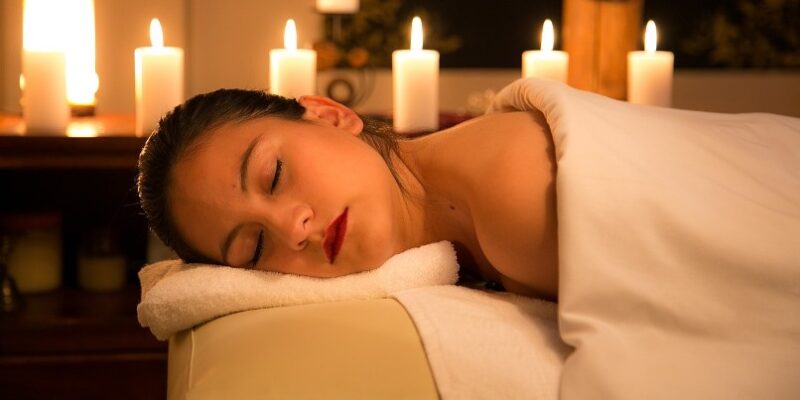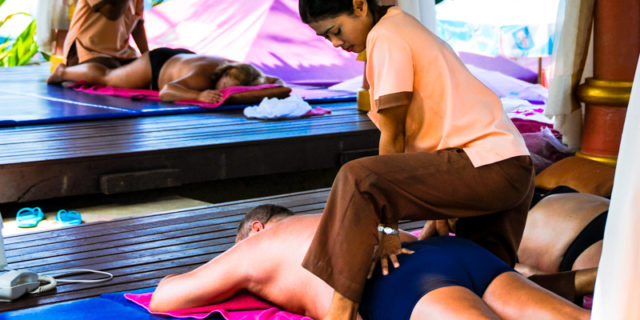
Table Thai Massage is always a hot topic: some don’t consider it Thai Massage any longer, others say it’s the same and that it’s just the practitioner who needs to adjust his or her working position to do about the same as Thai Massage on the mat on the floor.
Historically, Traditional Thai Massage was typically done on the floor on a massage mat or mattress. In fact, one can definitively do more on the floor than on the table (there’s simply more space available to work), and although almost every technique can be “translated” to the table it’s certainly not the same experience for the practitioner (and I would say neither for the receiver).

One should just try doing the same Thai Massage session on the table and on the floor. Unquestionably, therapists will feel that their body moves very differently. On the floor a session gets a more Yoga-like style and sensation. One shouldn’t forget that a properly applied Thai Massage treatment is not only “lazy Yoga” for the client, but also “active Yoga” and stretching for the practitioner.
A good massage is one were both practitioner and client feel well. If practitioners are not comfortable with their own moves and body positions, the receiver will feel that. And that makes a massage session less effective.
Besides all that, there’s certainly another quality when working on the floor. There’s something very “basic” to it. Something “grounded.” Hard to explain in words perhaps, but I’d like to compare it with a child playing on the floor. It’s very natural to work, live, and play on the floor. It gives a intimate and pleasant connection.
I think that Table Thai Massage has become very popular because it fits in perfectly with existing Western massage modalities. Most massage work in the West is done on the massage table, and bringing in Thai Massage techniques is easier when it’s also done on the table. The client is already on the table and it would interrupt the session asking the client to lay down on the floor to do a certain Thai Massage technique or sets of techniques, to later again return to the table.
As style integration is rather trendy nowadays, it makes sense that more and more of Thai Massage is done on the table and … on the chair, by the way. Just like Table Thai, Chair Thai Massage is on the increase. Chair Thai can be done at the workplace, and that comes in handy. Moreover, it means an extra source of income for massage practitioners.

Perhaps it’s clear that I’m not such a fan of Table Thai myself. Nevertheless, I need to admit that even in Thailand there’s quite a lot of work done on “the table,” mostly by the blind. Thai Massage given by blind or otherwise visually impaired masseurs in Thailand is very common and, as far as I have experienced, it’s mostly done on a large massage table, usually with the table having a size between a single and double bed.
Now, for the blind, I assume that working on a table is more comfortable, easier, because a table gives clear reference points for a therapist who can’t see or can’t see well. I suppose the same reason applies for Chair Thai Massage sessions done by the blind.
Anyway, having experienced receiving Thai Massage sessions on the table, I must say that excellent Thai massage sessions can be given. Although, and that’s my personal experience, the set of techniques applied is generally much more limited compared to sessions on the mat.
Returning to the title of this article I would say that Table Thai Massage is certainly still Thai Massage, just like steam and ice are both still water. And that, in fact, complies perfectly with the Thai motto that things are always “Same, Same, but different!”

















